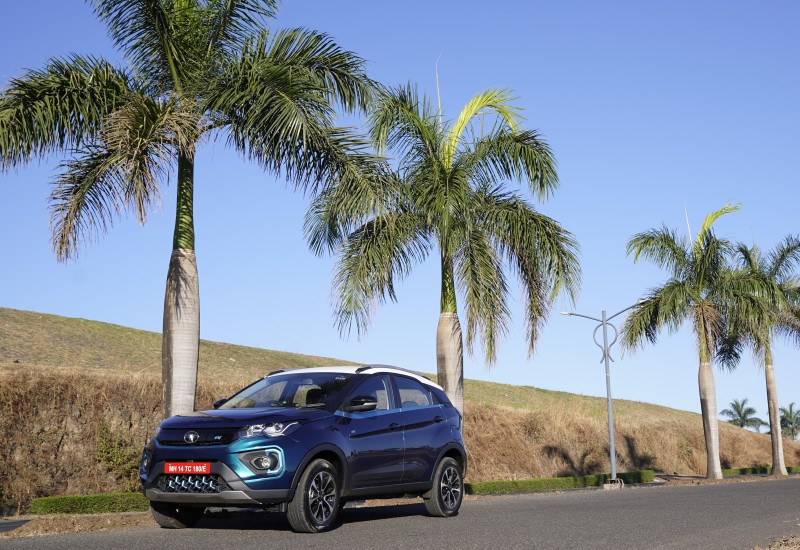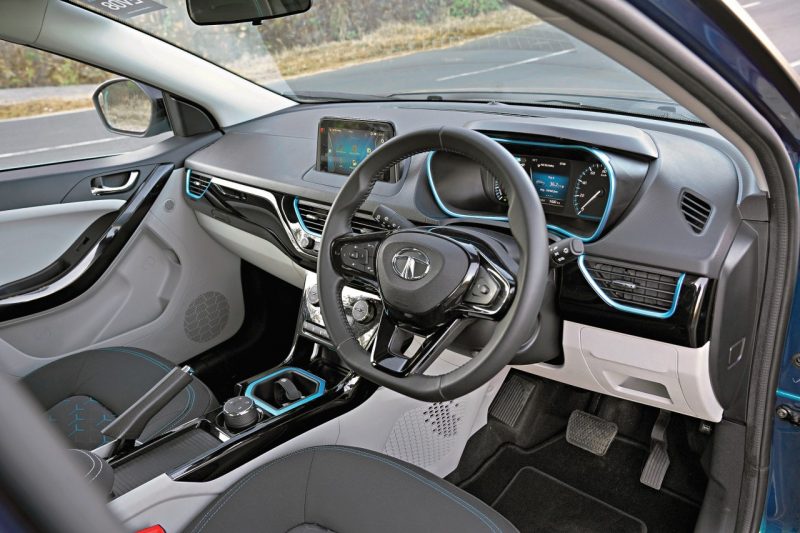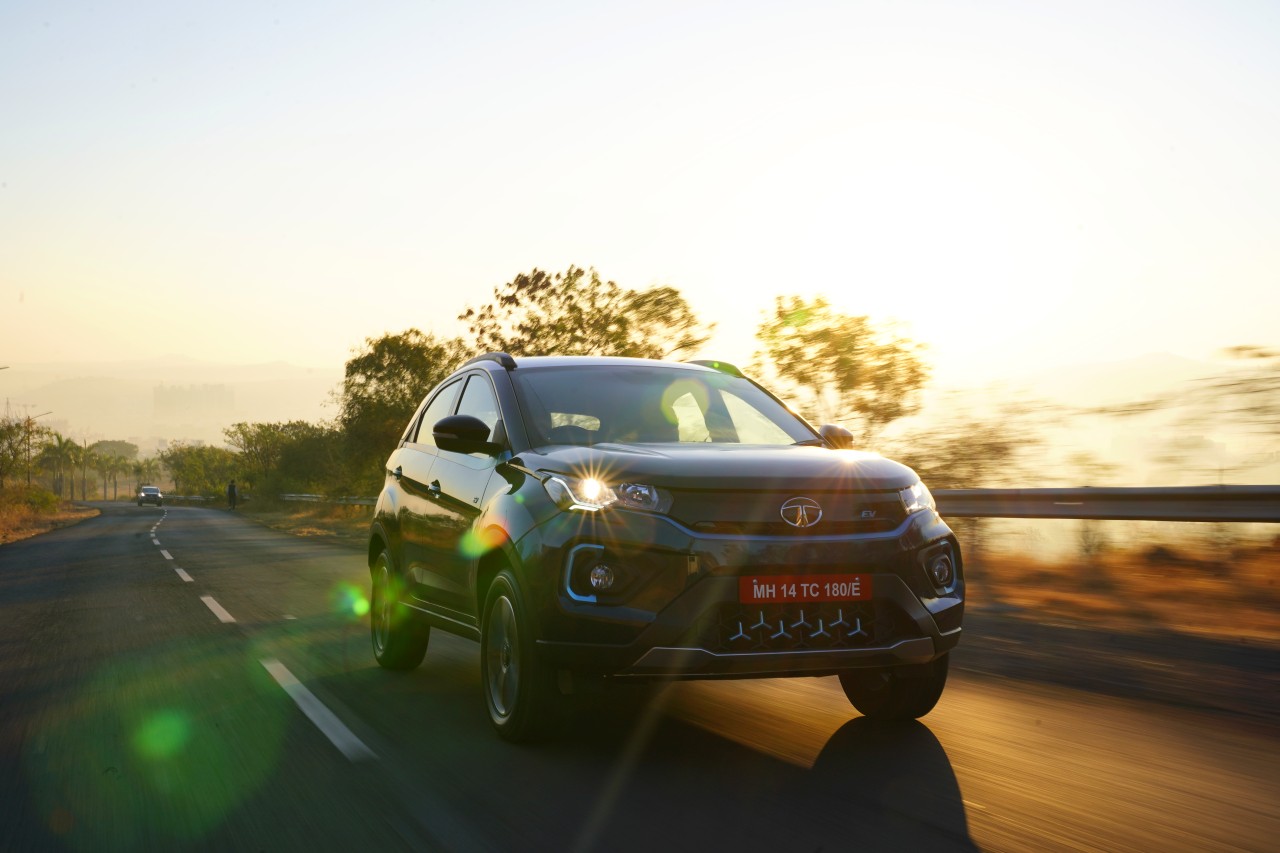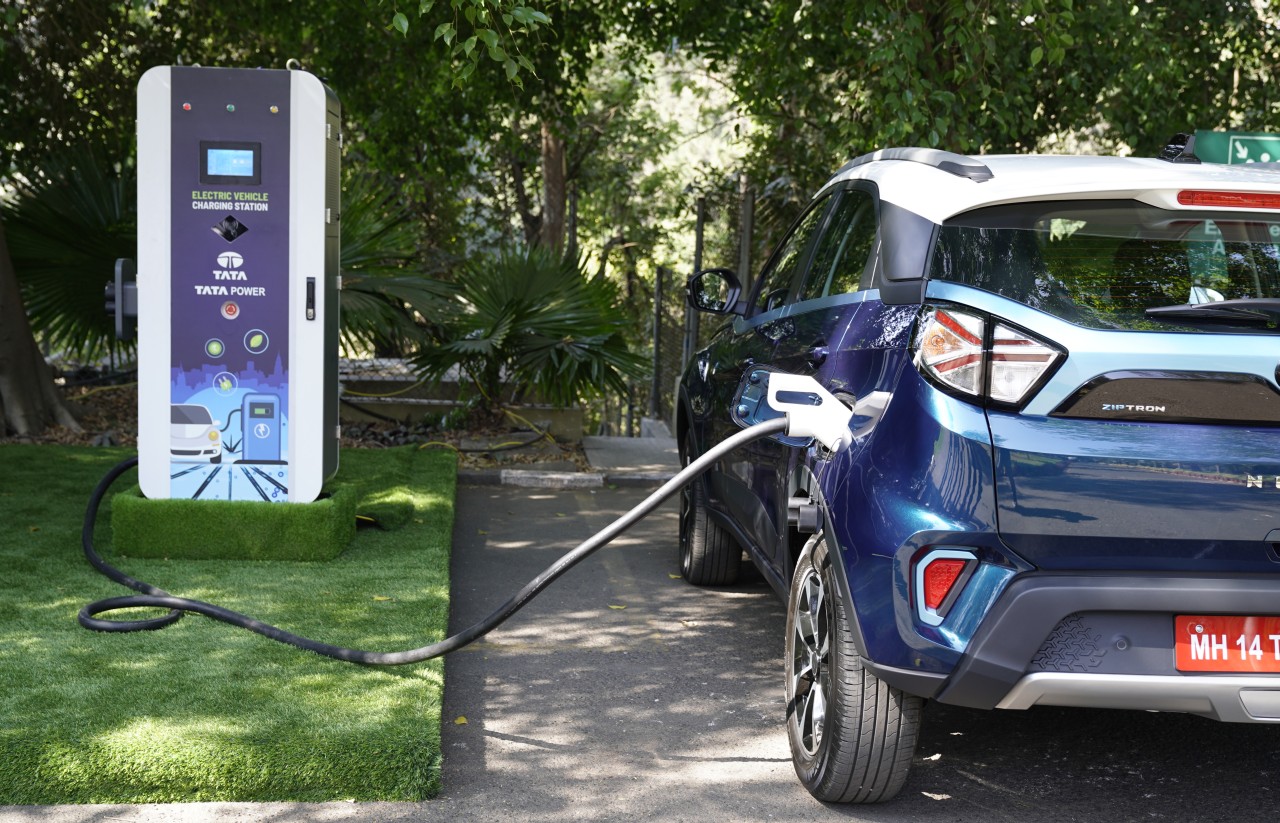We took the Tata Nexon EV for a spin around Pune city to see if India’s most affordable electric-SUV can be the perfect modern-day city car.

Tata Motors have done a smarty thing by taking the conventional Nexon and engineered it to accommodate a battery pack and an electric motor. This way you get all the goodness of a compact crossover with the feel-good factor of driving a green car.
Design
The Tata Nexon EV, in fact, is a facelift version of the car and gets a new set of headlamps, reshaped front grille with tri-arrow theme, and an attractive teal blue body colour which is further enhanced by electric blue strips. The bonnet is also raised slightly, hinting at the car’s compliance with the pedestrian protection norms that are expected to come into effect later this year. And even the EV badges make quite a statement.
Cabin
The cabin has been altered too and Tata claim that the electric version offers 20 per cent better sound-proofing as compared to conventional Nexon. You can spot the signature tri-arrows and the electric blue highlights in the cabin too. What will surprise you the most is the flat and low floor which gives the EV similar cabin room like the Nexon petrol or diesel. Even when occupying the back seats, there’s sufficient knee- and head-room and there’s a decent 350 litres of boot space too.

Features
Our Tata Nexon EV XZ+ test car isn’t the top-end model and doesn’t get features like auto headlamps, leather upholstery, rain-sensing wipers or a sunroof. Although there are rear a-c vents, the EV version doesn’t come with blower controls. Even the USB charging point has been omitted but you do get a 12-volt socket on the parcel tray. The Nexon now has internet inside and offers 35 connected-car features which can be accessed remotely from your smartphone. The seven-inch infotainment comes equipped with Apple CarPlay and Android Auto, so you can get a live feed of the navigation from your smartphone. The semi-digital driver’s information console gives plenty of useful information on the go, including battery charge, driving range, average Wh/km, the selected driving mode, and a live graph showing the power consumed and regeneration going to the battery.

Performance
The liquid-cooled battery spins the 129-hp electric motor that powers the front wheels. Being electric, it’s free of the usual combustion engine clatter and the low-rolling-resistance tyres also play a vital part in keeping the cabin insulated from the usual road noise. But it’s the spontaneous power delivery that makes the Nexon EV so zippy to drive. The noiseless single-speed propels the car ahead seamlessly and most of the 245 Nm of torque is waiting for you to tap the accelerator that immediately gets into action. After the initial burst of power, things do flatten out, though, which is a little underwhelming. After a few enthusiastic corners, you’ll start to miss ESP and traction control as these electronic aids would have helped to lay down the power more productively.
Ride and Handling
Compared to its ICE sibling, the Nexon EV’s suspension set-up feels more supple and plush. Obviously, the battery pack is heavy and makes this version over a 100 kilos heavier, but, thankfully, this doesn’t reflect proportionately on the ride quality: primarily because the weight or centre of gravity is very low and also because of some clever engineering such as the use of light-weight alloy wheels. The steering feels effortless and could do with some more weight but is precise none the less. Also useful are the hill-start assist and hill-descent controls. (Also Read: MG ZS EV Electric SUV India Test Review)

Battery Range and Charging
Although the company presentation showed a range of 312 km on a full charge, in the real-world driving conditions, it should be around the targeted 200 km, which is an acceptable number for city use. During our drive, a glance at the instrument console showed 85 per cent battery charge with a range of 220 km. Our test route comprised both highways and hilly terrain (not to forget our heavy right foot and Sport mode) which dropped the battery charge to 34 per cent, showing a range of 78 km. It takes about eight hours using the home charger to charge it from 20 to 80 per cent while the fast charger can power up 80 per cent of the battery in just one hour.
Conclusion
Despite a few rough edges, the Nexon EV is worth considering if you’re looking for an electric car within the range of Rs 14-16 lakh. Not to forget the money you’ll save on fuel and maintenance as compared to a conventional car. We hope the government sets up the charging infrastructure quickly so that investment made by car companies like this pays off. (Also Read: Tata Nexon EV Launched)
[metaslider id=24876]




















Leave a Reply